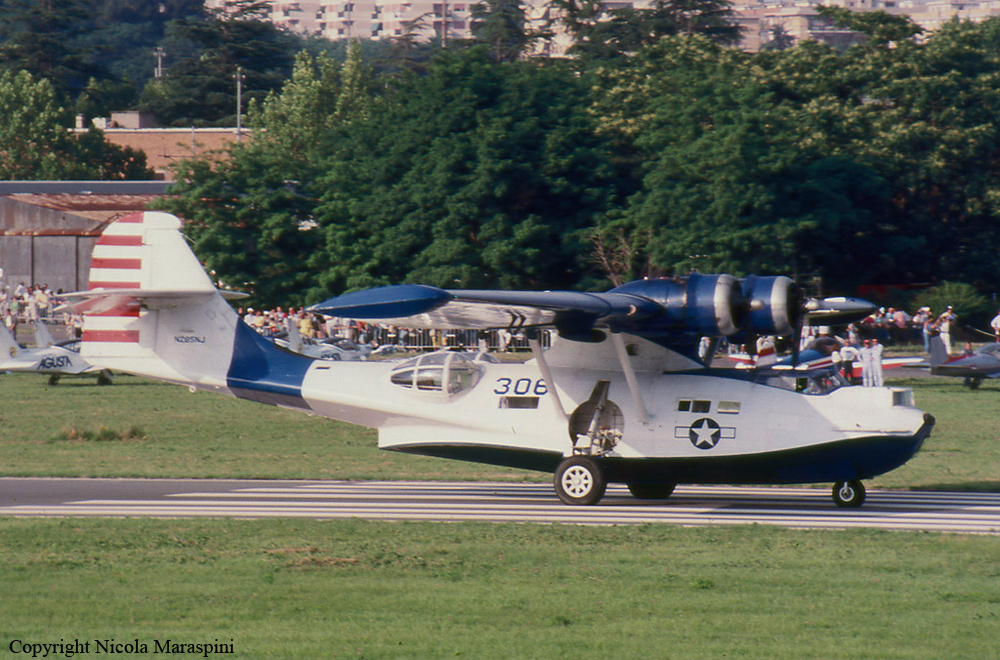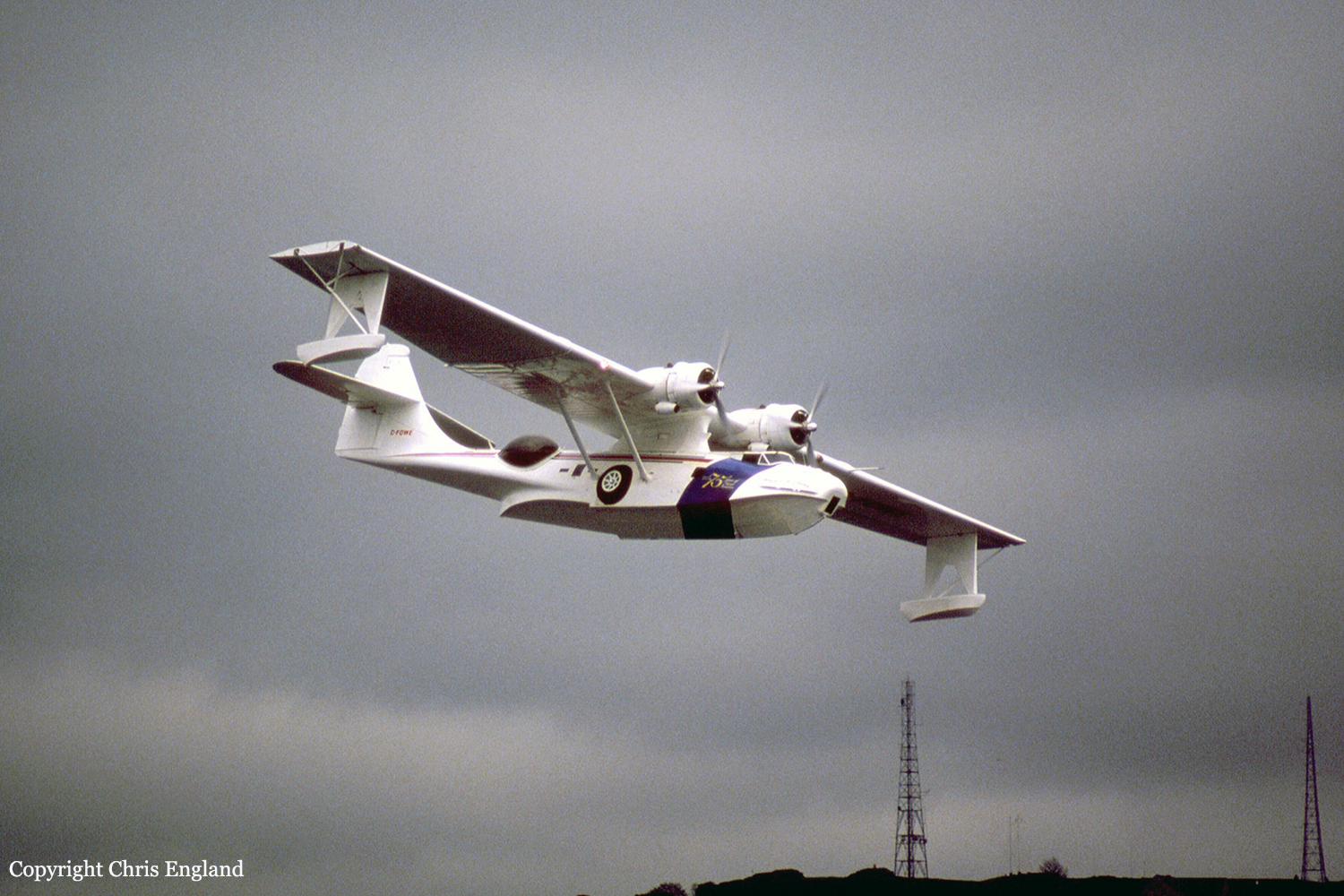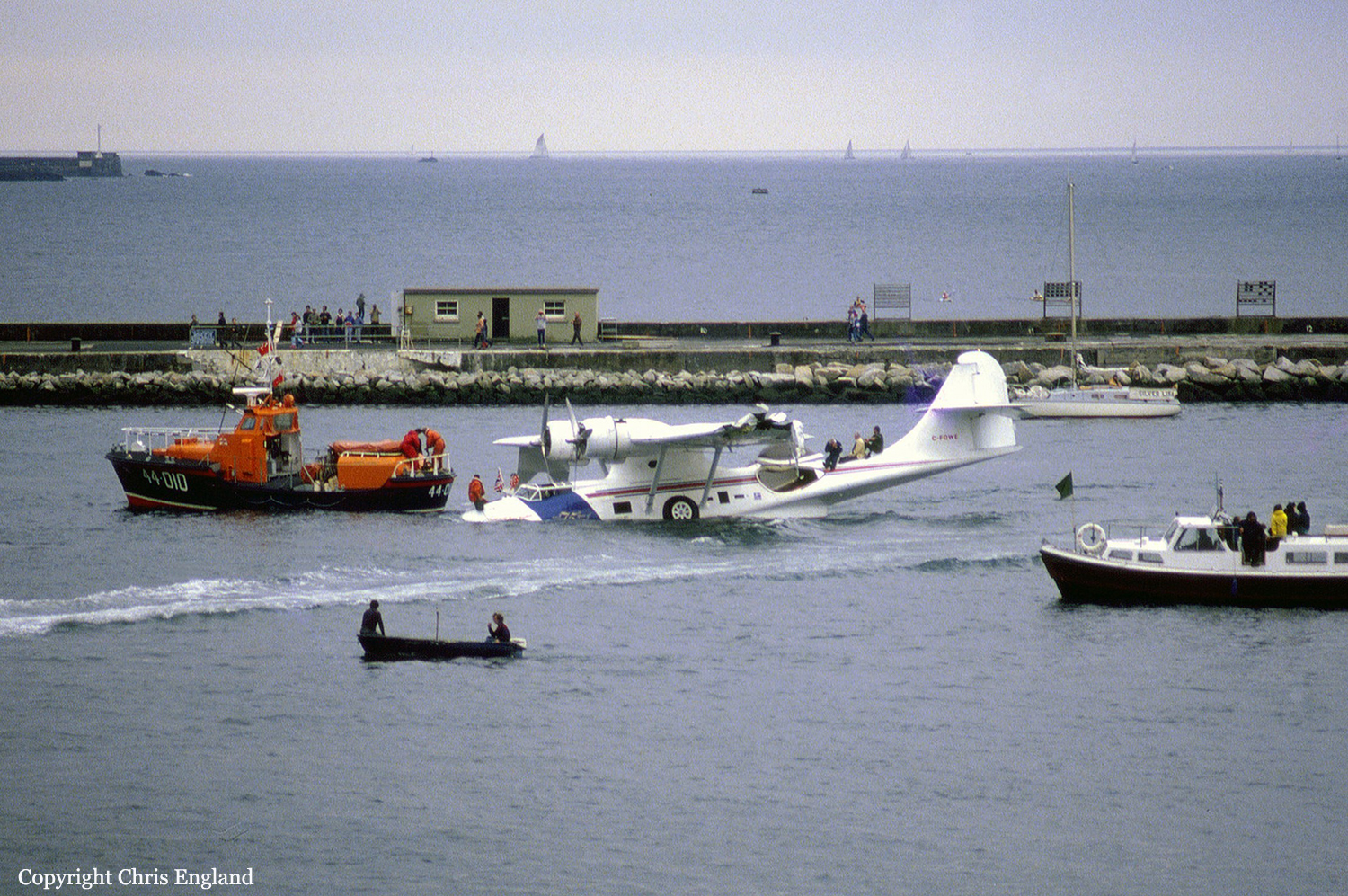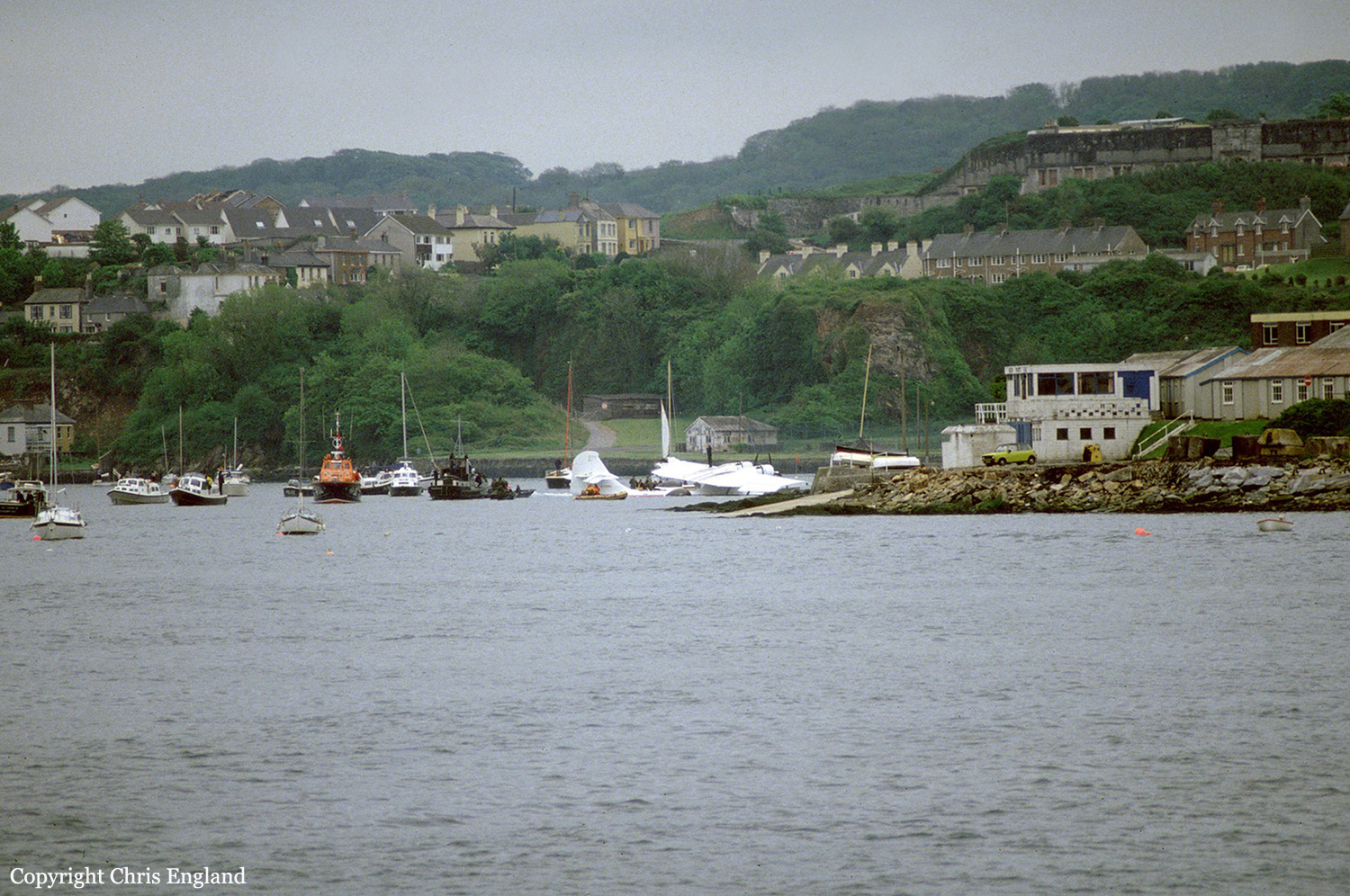Country
Crash of a Consolidated PBY-5A Catalina off Southampton: 2 killed
Date & Time:
Jul 27, 1998 at 1444 LT
Registration:
VP-BPS
Survivors:
Yes
Schedule:
Southampton - Southampton
MSN:
1997
YOM:
1944
Crew on board:
4
Crew fatalities:
Pax on board:
14
Pax fatalities:
Other fatalities:
Total fatalities:
2
Captain / Total hours on type:
151.00
Circumstances:
The aircraft had been booked for a static display and press 'photocall' at Southampton Airport, as part of the official launch of a project known as Seawings 2000. The aircraft operator had offered some short flights, free of charge, for the event organisers to use as they felt appropriate. Initial seat allocation was to the press, and members and officers of Southampton City Council. The remaining seats were offered to individuals representing organisations assisting the running of the project. The crew consisted of two pilots and two rear crew; one of the latter was designated 'crew chief'. There were two passenger compartments separated by a central compartment which had a door in the front bulkhead. Each passenger compartment was configured with eight seats, four either side of a central aisle. The front seats in each compartment were aft facing. The seats were typical airline type and had a standard lap belt restraint; a lifejacket was stowed under each seat. There was a bench type seat in each rear blister; however, these did not have restraint belts. On land, the aircraft is normally entered/vacated via ventral stairs, however, this access is not available when on water. There is a window type hatch between the seats on the left side of the front compartment. This is hinged at the top and opens upwards and outwards. To the rear and either side of the aft compartment there are two observation blisters which open upward in an 'eyelid' fashion. All three exits can be used for emergency egress. Emergency egress from the flight deck is through a removable hatch above the co-pilot's head.
Probable cause:
Because the nose gear doors were not recovered, it is not possible to exclude the possibility that the aircraft encountered a significant piece of flotsam which caused the doors to collapse inwards. Regardless of this, the presence of the severe corrosion in the nose gear operating mechanism torque tube can only have served to compromise the ability of the left door to resist the range of loads which might have been imposed during a water landing. The corrosion found in the torque tube had clearly developed over a long time but it went undetected because it was inside a closed area and no specific inspection of the inside of the tubes was called for. When looking at another Catalina, it was observed that there were no bungs in the aft ends of the torque tubes and it would have been possible, with suitable apparatus, to inspect the whole of the inside of the tube assemblies, particularly in the zone where the tube failed on this occasion. The Maintenance Manual and Schedule for the Catalina were developed and written in a different age when these aircraft were very differently utilised. Although both the Manual and Schedule have been developed as a result of the Catalina's continued amphibious operation, for probably much longer than originally envisaged, there are now likely to be some time related maintenance considerations which did not previously exist.
Final Report:

Crash of a Consolidated PBY-5A Catalina in the Pacific Ocean
Date & Time:
Jan 15, 1994
Registration:
N5404J
Survivors:
Yes
Schedule:
Los Angeles - Hilo - Papeete
MSN:
22022
YOM:
1943
Crew on board:
1
Crew fatalities:
Pax on board:
7
Pax fatalities:
Other fatalities:
Total fatalities:
0
Circumstances:
The aircraft was transferred from Los Angeles to New Zealand via Hilo and Papeete, Tahiti. En route, while cruising at the altitude of 1,500 metres, the crew encountered technical problems with the left engine and decided to divert to Christmas Island. The left engine eventually failed and as the crew as unable to maintain a safe altitude because the aircraft was heavy (load of fuel to cross the Pacific), he decided to ditch the aircraft about 150 km north of Christmas Island. The aircraft sank four hours later and was lost. All eight occupants were rescued by the crew of a merchant ship eight hours later.
Probable cause:
Failure of the left engine for unknown reasons.

Crash of a Consolidated PBY-5A Catalina in Torino: 2 killed
Date & Time:
May 21, 1989
Registration:
N285NJ
Survivors:
Yes
MSN:
1808
YOM:
1944
Crew on board:
2
Crew fatalities:
Pax on board:
3
Pax fatalities:
Other fatalities:
Total fatalities:
2
Circumstances:
After landing on a wet runway, the seaplane suffered aquaplaning. The crew initiated a go-around but this was too late. The aircraft overran, struck a fence and came to rest in a farm courtyard, bursting into flames. All three passengers were injured while both pilots were killed.

Crash of a Consolidated PBY-5A Catalina off Plymouth
Date & Time:
May 31, 1986 at 1050 LT
Registration:
C-FOWE
Survivors:
Yes
MSN:
11074
YOM:
1941
Crew on board:
4
Crew fatalities:
Pax on board:
3
Pax fatalities:
Other fatalities:
Total fatalities:
0
Circumstances:
The Catalina was one of two that arrived that morning in celebration of the first transatlantic flight by a Curtis NC-4 aircraft in 1917. The first landed without incident but the 2nd veered off course on landing and hit a temporary buoy before crashing into a heavy permanent navigational buoy that ripped off part of a wing and one of her floats. This caused the aircraft to cartwheel around out of control performing a spectacular 'surface loop'. Luckily she stayed afloat and the people on board were rescued by the occupants of some of the welcoming party's boats. One member of crew was taken to hospital with a gashed leg. The sinking aircraft was kept afloat and towed to the nearby former RAF flying boat base at Mount Batten where she remained in one of the old 'Sunderland' hangars under repair for several months. She eventually flew out of Plymouth Hoe on the return leg of the transatlantic flight towards the end of the year.




Crash of a Consolidated PBY-5A Catalina off Kahului
Date & Time:
Apr 14, 1986
Registration:
C-FSAT
Survivors:
Yes
MSN:
21986
YOM:
1943
Crew on board:
0
Crew fatalities:
Pax on board:
0
Pax fatalities:
Other fatalities:
Total fatalities:
0
Circumstances:
After being stores for almost a year, the seaplane was engaged in a local test flight in the region of Kahului. Upon landing on sea, it collided with reef and came to rest. There were no casualties but the aircraft was damaged beyond repair.
Probable cause:
Collision with reef upon landing.
